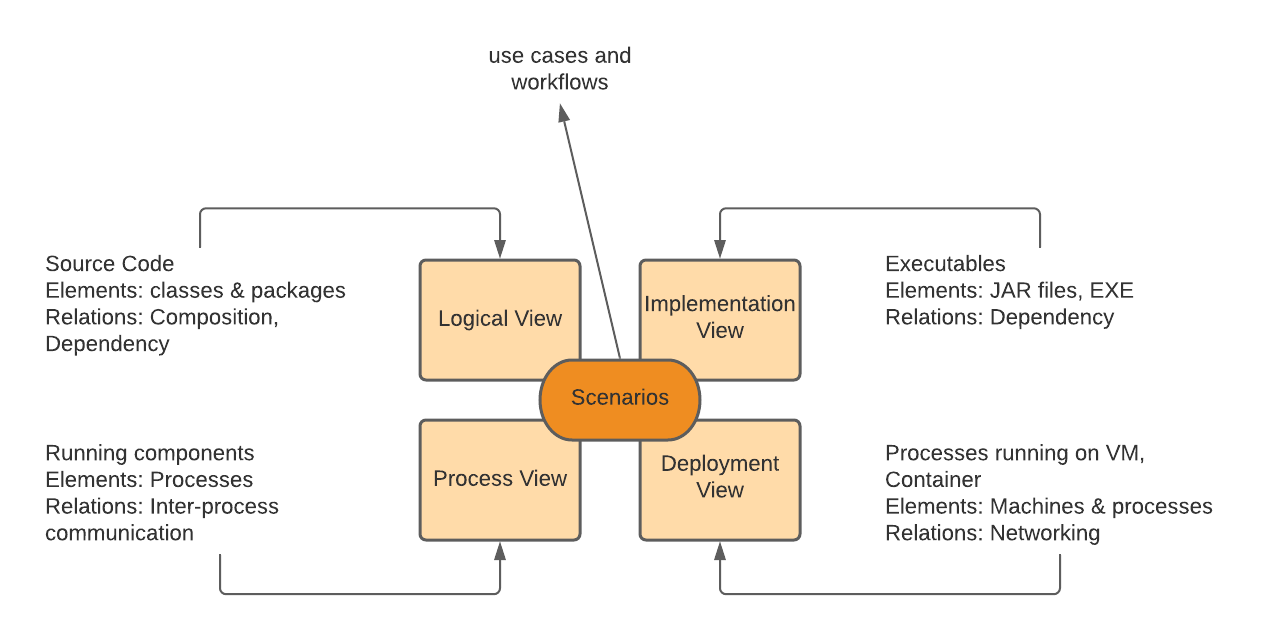Software Architecture: The 4+1 view model
What is Software Architecture?
The software architecture of a computing system is the set of structures needed to reason about the system, which comprise software elements, relations among them, and properties of both. by SEI
We can decrypt the above definition as structuring a system as a whole recessed block into parts connected, complementary and modular. The more these parts are decoupled and can work independently, and communicate to each other effectively the more our architecture will fill its mission to ensure a maintainable, extensible and homogeneous system.
The 4+1 view model of software architecture
Like a building, there are different plans and maps that can describe different the different perspectives of that building, we have the electrical, plumbing, structural and others. This is exactly how the 4+1 view model defines software architecture in the paper published by Phillip Krutchen
 The 4+1 view model describes an application’s architecture using four views, along with scenarios that show how the elements within each view collaborate to handle requests
The 4+1 view model describes an application’s architecture using four views, along with scenarios that show how the elements within each view collaborate to handle requests
Each of the four views has a well-defined purpose as detailed below:
Logical View
It consists of the source code written by developers, in the context of an oriented programming language like Java, the elements are classes and packages, in addition to relationships between them such as inheritance, association, and composition…
Implementation View
Includes the result of the build process that can be run or deployed such as a Java JAR or Node.js Package. These interact with each other in the form or a composition or dependency relationship.
Process View
Refer to the process holding and running either in virtual machines or containers like docker, relations between them is called inter-process communication.
Deployment View
Represents the map of the physical or virtual machines where the system is executed and running, also describes the communication at level through the network. For example this view can be a VPC with all the routing configuration inside this network and between it and the internet.
Why an application architecture is relevant?
An application come to life with the purpose of solving a problem, to do so it needs to fulfill two types of requirements, Functional requirements that defines what the application should do, Previously defined in the form of specifications, with the agile edge we define them as user stories, use cases, or events. we can start coding immediately and produce an application that respond to these requirements without thinking about architecture. But when it come to develop a reliable, maintainable and extensible system, Architecture is our core activity because it helps us answer questions regarding how the system behaves with millions of users at the same time, security threats and delivery time. Architecture meets quality requirements.
Architecture Styles
I found the definition given by David Garlan and Mary Shaw in their publication titled An Introduction to Software Architecture an amazing reference to understand the concept of architecture styles and how it can be view in the field of computing systems.
An architectural style, then, defines a family of such systems in terms of a pattern of structural organization. More specifically, an architectural style determines the vocabulary of components and connectors that can be used in instances of that style, together with a set of constraints on how they can be combined. These can include topological constraints on architectural descriptions (e.g., no cycles). Other constraints—say, having to do with execution semantics—might also be part of the style definition.
Follow are the questions shared by these two pioneers in the discipline of software architecture, answering these questions will remarkably help define the architecture that fit for the system we’re building:
Given this framework, we can understand what a style is by answering the following questions: What is the structural pattern,the components, connectors, and constraints? What is the underlying computational model? What are the essential invariants of the style? What are some common examples of its use? What are the advantages and disadvantages of using that style? What are some common specializations?
in the next part, let’s explore some of the most known architecture styles Logical View
